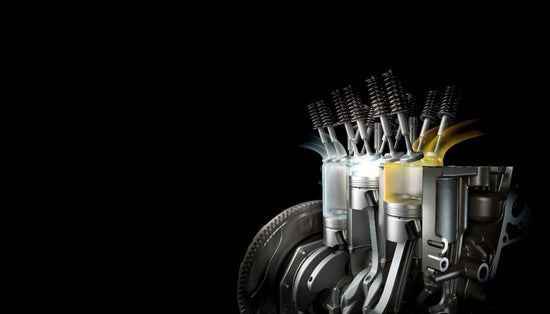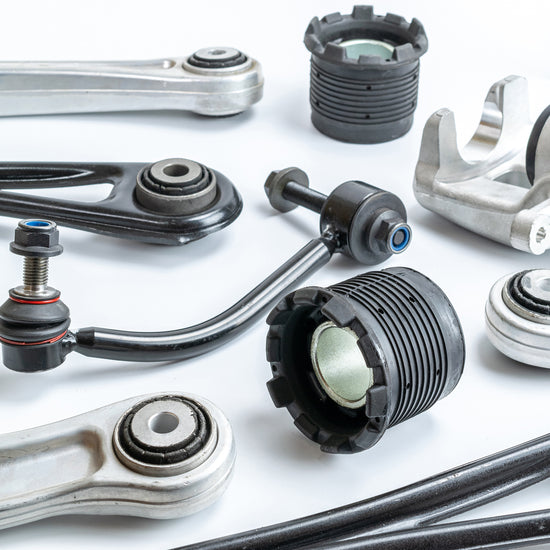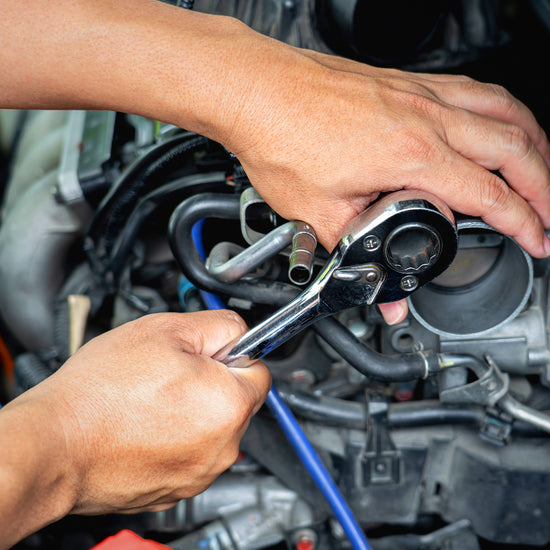If you own a modern Ford, whether it’s a Fiesta, Focus, Transit, or Kuga, you may have heard of the term “wet belt” or “wet timing belt.” It’s a critical engine component, and unfortunately, it has become one of the most talked-about repair issues among Ford owners in recent years.
In 2025, wet belt replacement remains a hot topic because of its high cost and the serious damage that can occur if it’s not addressed in time. Owners are asking: How much does it cost to replace a Ford wet belt? Why do they fail earlier than expected? Can anything be done to prevent major engine failure?
This guide covers everything you need to know from symptoms and replacement intervals to the real cost of repairs and what you should expect in 2025.
What Is a Ford Wet Belt and Why Does It Matter?
Traditionally, cars have used either a dry timing belt or a timing chain to keep the engine’s camshaft and crankshaft in perfect sync. Ford introduced the “wet belt” system in many of its EcoBoost engines. Instead of running dry, the timing belt is immersed in engine oil.
Why did Ford do this?
-
Reduced friction for better fuel economy
-
Quieter operation compared to chains
-
Compact design for smaller, turbocharged engines
Which Ford engines are affected?
The 1.0 EcoBoost engine is the most widely known for wet belt issues, but other models are also impacted, including:
-
Ford Fiesta 1.0 EcoBoost
-
Ford Focus 1.0 EcoBoost
-
Ford Transit/Transit Custom 1.0 & 1.5 EcoBoost
-
Ford Kuga, Mondeo, Puma with certain EcoBoost engines
Ford originally claimed these wet belts could last up to 150,000 miles or 10 years, but later issued guidance recommending replacement earlier in some cases (GarageWire).
Common Problems with Ford Wet Belts
The concept of running a belt in oil sounds clever, but in reality, the oil and rubber don’t always mix well. Over time, the belt material can degrade, leading to serious problems.
Typical issues include:
-
Belt degradation: Rubber particles mix with engine oil
-
Oil contamination: Sludge builds up, blocking oil flow
-
Blocked oil pickup: Starves the engine of lubrication
-
Timing issues: Belt stretch or slippage causes poor running
Warning signs of wet belt failure:
-
Rough idling or misfires
-
Rattling noise from the engine bay
-
Sudden loss of power
-
Check engine warning light
-
Metallic particles in the oil
If ignored, the belt can shred completely, leading to catastrophic engine damage (Ford Owners Club).
How Often Should a Ford Wet Belt Be Replaced?
Ford’s original guidance was 10 years or 150,000 miles. However, in real-world conditions, belts are failing far sooner.
Updated advice from specialists:
-
Replace between 60,000–100,000 miles, depending on driving style (Fleet News)
-
Vehicles used for short trips may need earlier replacement
-
Oil changes every 6,000–8,000 miles with the correct Ford-spec oil help prolong belt life
Owner reports back this up, with cases of wet belts failing at 65,000 miles or just 4–5 years old (Ford Owners Club).
See our Engine Repair & Rebuild Services for preventative advice and professional replacements.
Ford Wet Belt Replacement Cost in 2025
So, how much does it cost to replace a Ford wet belt in 2025? The answer varies depending on your model, mileage, and the extent of additional work required, but it’s not a cheap repair.
Average Cost Range in the UK
Recent research shows that the average Ford wet belt replacement cost is £981 in the UK (WhoCanFixMyCar). However, many owners find the bill is significantly higher in practice. Independent garage reports and driver experiences put the real-world cost at £1,200–£2,000+, particularly for popular models like the Fiesta and Transit.
One Fiesta driver shared that they were quoted nearly £2,000 for the job, highlighting just how labour-intensive this repair can be (Ford Owners Club).
Why Is It So Expensive?
The wet belt itself is not the biggest cost factor. The issue lies in how complex the job is:
-
Labour intensive: Replacement typically takes 10–12 hours of skilled work
-
Difficult access: In many cases, the engine must be partially removed
-
Additional work: Oil flushes, oil pump inspections, filters, and seals are often required to ensure no rubber debris remains in the oil system
Example Cost Breakdown
Here’s how a typical wet belt replacement bill might look in 2025:
-
Parts (wet belt kit, gaskets, seals): £300–£500
-
Labour (10–12 hours): £800–£1,200
-
Oil flush & filters: £100–£200
-
Potential extras (oil pump, water pump): £200–£400
That means even a “straightforward” replacement can exceed £1,200, and if additional engine work is needed, the final bill can easily approach £2,000.
Factors That Affect Replacement Cost
Not every Ford wet belt replacement comes with the same price tag. Several key factors can significantly influence the final bill.
Ford Model & Engine Type
The specific Ford model you drive plays a big role in the cost. Smaller cars like the Fiesta or Focus 1.0 EcoBoost generally cost less to repair compared to larger vehicles such as the Transit or Transit Custom, where access is more difficult and labour time increases.
Age & Mileage of Vehicle
An older vehicle with higher mileage is more likely to need extra work during replacement. For example, seals, gaskets, or even the oil pump may also require attention, adding to the overall cost.
Extent of Damage
If the wet belt is replaced as routine maintenance, costs remain relatively contained. However, if the belt has already degraded or shredded, the situation becomes far more serious. Debris can block the oil pickup pipe, requiring a full strip-down and deep clean of the engine’s lubrication system. In severe cases, major internal damage may also need repair.
Parts Quality
The choice between genuine Ford parts and aftermarket alternatives makes a difference. Genuine components tend to be more expensive but are built to Ford’s specifications, often providing longer-lasting reliability.
Workshop Choice
Where you choose to have the work carried out also impacts cost. Main dealer workshops usually charge the highest rates, while independent engine specialists can often deliver the same or higher level of expertise at a more competitive price.
What Happens If You Don’t Replace a Failing Wet Belt?
Ignoring a failing wet belt can be one of the costliest mistakes a Ford owner makes.
Risks of ignoring replacement:
-
Belt debris blocks the oil strainer
-
Engine loses oil pressure
-
Bearings, camshafts, and turbos get starved of lubrication
-
Engine seizes and requires a rebuild or replacement
Cost comparison:
-
Preventive wet belt replacement: ~£1,250 (The Care Edition)
-
Emergency repair after failure: £2,560+ (The Care Edition)
-
Full engine rebuild: £3,500–£5,000 (varies)
-
Replacement engine: £4,000–£6,000+
Learn about our Reconditioned Engines as a cost-effective solution if your wet belt has already caused severe damage.
Can a Wet Belt Be Upgraded or Converted?
One common question is whether owners can convert a wet belt engine to a timing chain to avoid this issue permanently.
Unfortunately, the answer is no. These engines were designed specifically with a wet belt system, and no direct conversion kits exist.
What you can do instead:
-
Stick to regular oil changes using the correct Ford-approved specification
-
Replace earlier than the official interval
-
Use high-quality replacement parts from a trusted supplier
Choosing the Right Garage or Specialist
Because of the complexity of wet belt replacement, this is not a job for just any garage.
Why experience matters:
-
The job requires engine-specific expertise
-
Mistakes during reassembly can lead to engine damage
-
Some low-cost garages cut corners, risking failure soon after replacement
At Approved Engines, we specialise in Engine Repair, Rebuild, and Reconditioning, ensuring your Ford EcoBoost receives expert care.
Conclusion
Ford’s wet belt design has caused major headaches for many owners. While marketed as a long-life solution, the reality is that many belts fail far earlier than expected, creating huge repair bills.
In 2025, the average wet belt replacement cost ranges from £981 to £2,000+, depending on your model, mileage, and repair needs. That may seem steep, but it’s a fraction of the cost of a full engine rebuild or replacement if the belt fails.
The key takeaway: Don’t wait for failure. Be proactive: service your car regularly, stick to shorter oil change intervals, and book your wet belt replacement well before the official 150,000-mile mark. Doing so could save you thousands and keep your Ford running smoothly for years to come.
Book your inspection today via our Contact Page.
FAQs on Ford Wet Belt Replacement in 2025
How long does wet belt replacement take?
Wet belt replacement is a complex, labour-intensive job that usually takes between 10 and 12 hours. Most garages will spread the work over one to two days to ensure everything is properly reassembled and tested. The time can increase if additional components, such as the oil pump or gaskets, also need attention.
Can I drive with wet belt failure symptoms?
Driving with wet belt failure symptoms is highly risky and not recommended. A degraded belt can release rubber particles into the oil, which may block the oil pickup and cause catastrophic engine damage. In some cases, even a short drive with these symptoms can result in the need for a full engine rebuild.
Are all EcoBoost engines affected?
Not every Ford EcoBoost engine uses a wet belt, but many of the popular 1.0 and 1.5 EcoBoost engines do. These are the models most frequently reported to suffer premature wet belt issues. Larger EcoBoost engines and certain Ford diesels may use traditional timing belts or chains instead.
Is this issue covered by warranty or recall?
Some Ford vehicles may have limited warranty coverage if they are still within the manufacturer’s time or mileage limits. However, for many owners, especially with cars older than five years, this issue is not covered. Ford has faced criticism but has not issued a universal recall, leaving most drivers to pay for the repair themselves (GarageWire).
What’s the difference between a timing belt and a wet belt?
A wet belt is essentially a timing belt that operates inside the engine, running in oil rather than air. It was designed to improve efficiency, reduce noise, and extend service life compared to dry belts. Unfortunately, in practice, many wet belts degrade faster than expected, sometimes failing earlier than traditional dry belts or chains.







